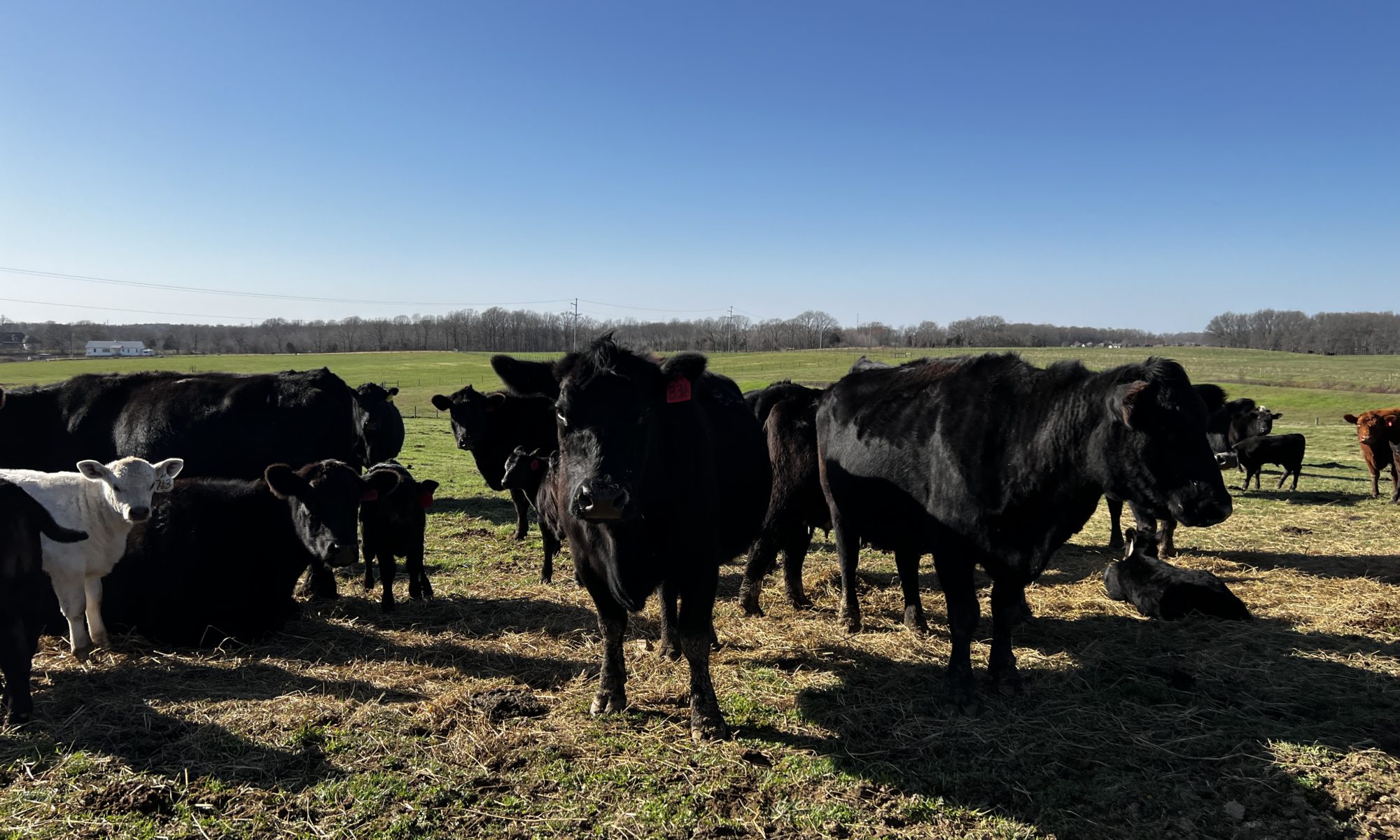

Dr. Andrew Griffith
Assistant Professor
Department of Agricultural and Resource Economics
P: 865-974-7480
The January 1, 2023 cattle inventory report has been on the minds of cattle producers and industry participants for six months or longer. In essence, all of the people who waited with great expectation to see the results were really just waiting to have their thoughts on a smaller beef cattle herd and fewer heifers retained as replacements confirmed. There has been no doubt about smaller cattle numbers given the increase in beef cow slaughter and heifer slaughter in 2022 compared to 2021, but the magnitude of the decrease was up for discussion and debate leading up to the release of the report. The following are some of the highlights of the January 1, 2023 cattle inventory report.
Based on the January 1, 2023 cattle inventory report and comparing it to the same report a year earlier, beef cow inventory declined one million head to 28.9 million head, which is the lowest beef cattle inventory since 1962. To put it into perspective, 2023 beef cow inventory is 39,000 head lower than 2014 beef cow inventory. Similarly, beef heifers held for replacement came in just under 5.2 million head, which is nearly a 320,000 head decline from the previous year and the smallest quantity retained since 2011 and the second lowest quantity dating back to 1951. The last key number to make note of is the calf crop for 2022. The 2022 calf crop was estimated at nearly 34.5 million head which is a two percent decline from the previous year and the smallest calf crop since 2015.
The 2022 calf crop is important from the standpoint of the number of cattle available to go on feed the first eight or nine months of 2023, which can go a long way in understanding yearling cattle prices. However, many cattle producers, especially those in the middle of calving season, are more curious about the 2023 calf crop. Thus, the best estimation of the 2023 calf crop is just under 33.6 million head, representing a decline of 900,000 head compared to 2022. This type of decline represents nearly two weeks of slaughter, which means cattle feeders and packers will be competing for cattle for many months in the future.
More details could be hashed out as it relates to the report, but the more pressing conversation is what this means for the overall market and prices producers can expect moving forward. The first question on many producers’ minds is if prices will reach 2014 and 2015 levels given the similarities of inventory for the two time periods. The CME feeder cattle index peaked near $245 per hundredweight in 2014 and spent considerable time above $220 per hundredweight. Fed cattle prices peaked just above $171 based on the 5-area weighted average price during that time period and spent many weeks trading above $160 per hundredweight. However, similar cattle inventories do not necessarily mean similar prices in the current environment.
There are several distinct differences in the two environments that influence the sectors of the cattle market differently. One major difference is that corn prices are currently $3 to $4 per bushel higher than they were when record feeder cattle prices were experienced. This means that cattle feeders cannot afford to pay as much in today’s market as the previous time period, because the cost of gain is significantly higher and fed cattle prices are too low to overcome the added cost. Another factor to consider is beef demand, which is clearly stronger today than it was eight or nine years ago. This means there will be support for beef and in turn support for finished cattle. This will be somewhat tempered though given inflation and higher interest rates are influencing consumer spending habits.
At the end of the day, what was expected was realized and that is beef herd contraction. What is yet to be realized is what cattle prices will do. It is more likely fed cattle prices reach or exceed record levels than for feeder cattle to challenge record prices, at least in the near term. These dynamics could change if feed prices decline moving through the year or if some other unexpected occurrence influences the market. The futures market was not trading at record levels as of the writing of this article.
